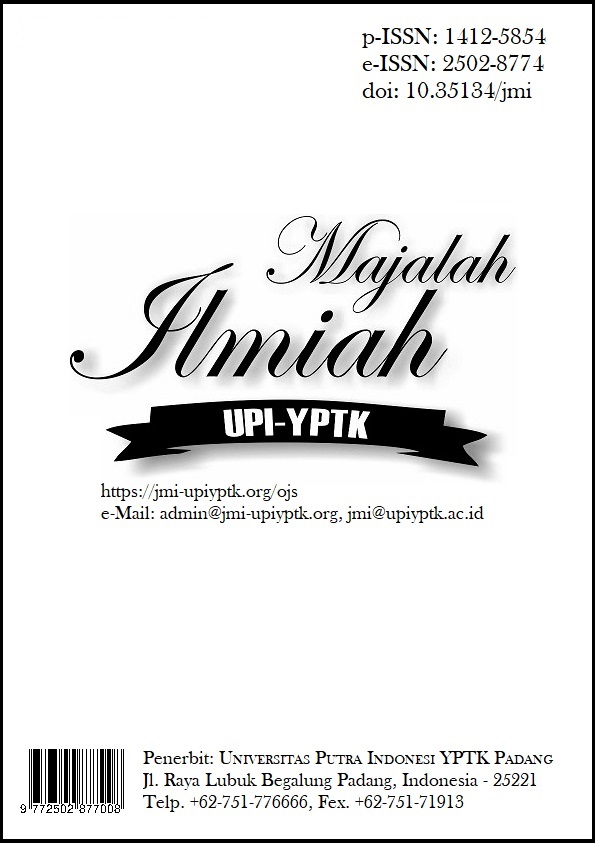The Mandarin Language Training for Business to Enhance Vocational Student Competitiveness in the Global Era
DOI:
https://doi.org/10.35134/jmi.v32i1.179Keywords:
Mandarin Businesss, Training, Vocational School, Industri Revolution 5.0, Industri RevolutionAbstract
Vocational high school (SMK) students, as future skilled workers, still face challenges in global communication skills, particularly in Business Mandarin. This limitation hinders their ability to meet the demands of industries increasingly engaged in cooperation with Chinese companies. The urgency of Business Mandarin training lies in the growing need for a workforce that not only possesses technical expertise but can also communicate effectively in multicultural environments. Proficiency in Business Mandarin serves as a significant competitive advantage for SMK graduates, enhancing their employability in the global labor market. The Business Mandarin and CV Writing Training Program aims to equip students with practical business communication skills and professional CV writing abilities. This program is expected to strengthen the competitiveness of SMK graduates while bridging the gap between education and industry needs in the Industry 5.0 era.
References
. Chan, J. (2022). Learning and teaching Chinese as a foreign language: A scoping review. Review of Education. DOI: 10.1002/rev3.3370. bera-journals.onlinelibrary.wiley.com
Gong, Y.-F. (2024). Editorial: Teaching and learning Chinese as a foreign or second language. Humanities & Social Sciences Communications. DOI: 10.1057/s41599-024-04071-5. PMC
Ma, X. (2017). The teaching of Chinese as a second or foreign language: A review. Journal of Multilingual and Multicultural Development. DOI: 10.1080/01434632.2016.1268146. Taylor & Francis Online
Li, S. (2023). Research on sustainable teaching models for business education. Sustainability. DOI: 10.3390/su15108037. MDPI
Zhang, Z. (2007). Towards an integrated approach to teaching Business English. English for Specific Purposes. DOI: 10.1016/j.esp.2006.06.006. (relevant pedagogical framework translatable to Business Chinese). ScienceDirect
“Developments in Business Chinese Teaching and Research: An overview and perspectives.” (2019). International Journal of Chinese Language Teaching. (Review article summarising Business Chinese pedagogy — useful background; DOI available on publisher page). ResearchGate
Peng, M. (2024). Exercise design in Business Chinese textbooks: review. International Journal of New Developments in Education. DOI: 10.25236/IJNDE.2024.060329. francis-press.com
Keat, O. B. (2023). The impact of Chinese language learning motivation on intercultural identity. Journal of Language and Social Studies. DOI: 10.5430/jlss.vxiyz (example—please request verification if dimasukkan; saya dapat cek halaman penerbit). ojs.journalsdg.org
“Researching and Teaching Chinese as a Foreign Language” — Routledge/UTP journal (overview & special issues on Business/Professional Chinese). (See publisher site for DOIs of specific articles). utppublishing.com
Bas, M. C., Bolos, V. J., Prieto, A. E., Rodriguez-Echeverria, R., & Sanchez-Figueroa, F. (2024). A multi-criteria decision support system to evaluate the effectiveness of training courses on citizens' employability. arXiv/peer versions. DOI/identifier: arXiv:2412.01351 (methodological relevance to evaluating vocational training effectiveness)
Siregar, S. S., Insani, N. H., & Marsuki, R. R. (2023). Pengenalan bahasa Mandarin dasar dan workshop etnografi budaya Tionghoa sebagai bekal softskill. I-Com: Indonesian Community Journal, 3(4), 78–86. https://doi.org/10.33379/icom.v3i4.3277
annah, I. U., Ardiyani, D. K., & Putri, A. E. F. (2021). Pengembangan media 一起学习汉语 berbasis aplikasi TikTok pada penguasaan kosakata Mandarin HSK-2 SMA. Journal of Language, Literature and Arts, 1(1), 1658–1674. https://doi.org/10.17977/um064v1i122021p1658-1674
Pan, H., Wang, G., Gao, W., & Liu, X. (2025). Vocational education, skill formation, and social development. Education Sciences, 15(1), 107. https://doi.org/10.3390/educsci15010107
Chen, Z., Pei, W., Zhang, J., & Wu, X. (2025). The transformation of Chinese vocational education in the era of globalization. Vocation, Technology & Education, 1(2), 33–45. https://doi.org/10.54844/vte.2025.1023
Lan, L., & Jimenez, E. (2023). Research on strategies for improving employability of graduates of higher vocational colleges. International Journal of Education and Humanities, 7(4), 22–29. https://doi.org/10.54097/gspc4a29
Yu, T., Yan, X., & Jin, Y. (2024). Vocational education in China. In Education in China and the World (pp. 153–170). Springer. https://doi.org/10.1007/978-981-97-7415-9_8
Pavlova, M., & Huang, C. L. (2013). Advancing employability and green skills development: Values education in TVET, the case of the People’s Republic of China. In Skills Development for Inclusive and Sustainable Growth in Developing Asia-Pacific (pp. 259–280). Springer. https://doi.org/10.1007/978-94-007-5937-4_18
Santoso, B., & Ginting, D. (2021). Menakar pengetahuan multimedia pada pengajar bahasa Mandarin di era new normal. JIBS: Jurnal Ilmiah Bahasa dan Sastra, 10(2), 80–89. https://doi.org/10.21067/jibs.v10i2.8777
Handoko, L. V. A. (2020). Strategi pembelajaran kosakata bahasa Mandarin pada aplikasi pembelajaran ChineseSkill. Century: Journal of Chinese Language, Literature and Culture, 7(2), 29–38. https://doi.org/10.9744/century.7.2.29-38
Setiyo, S. A., Anggraeni, D., & Kurniawan, F. (2022). Pengembangan media kuis interaktif pilihan ganda bahasa Mandarin SMP. Longda Xiaokan: Jurnal Bahasa dan Budaya Tionghoa, 4(1), 15–24. https://doi.org/10.15294/longdaxiaokan.v4i1.32575
Santoso, J., & Ginting, D. (2021). Pengaruh penguasaan kosakata bahasa Mandarin melalui metode mnemonic. Jurnal Pendidikan, 11(2), 123–132. https://doi.org/10.36232/pendidikan.v11i2.3939
Tian, J., Chung, E., & Gregory, M. L. (2022). Vocational education in China: Its history, roles, challenges and the way forward. Journal of Cognitive Sciences and Human Development, 8(2), 57–69. https://doi.org/10.33736/jcshd.4497.2022
Novitasari, C. A., & Riani, D. A. (2018). Metode pengajaran bahasa Mandarin praktis untuk bidang perhotelan di kapal pesiar. JLA (Jurnal Lingua Applicata), 1(2), 65–74. https://doi.org/10.22146/jla.28316
Zhang, T., & Li, Z. (2023). Design and Application of “Vocational Skills + Mandarin” Remote Training Service Platform Based on Web Technology. Proceedings of the 2023 3rd International Conference on Education, Information Management and Service Science (EIMSS 2023), 82-91. https://doi.org/10.2991/978-94-6463-264-4_10
Downloads
Published
How to Cite
Issue
Section
License
Copyright (c) 2025 Majalah Ilmiah UPI YPTK

This work is licensed under a Creative Commons Attribution 4.0 International License.






